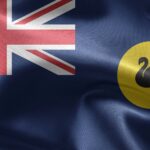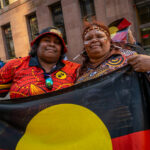National Close the Gap Day is observed on the third Thursday of March, falling on March 19 this year, and advocates for health equity of Australia’s indigenous people and educating the public about the health issues and barriers to well-being faced by them. Since 2007, National Close the Gap Day brings together Australians from all over the country to advocate for health equity and take meaningful action to create better and more equitable conditions for the indigenous people. The campaign encourages people and organizations to plan events that draw attention to the health issues of Australia’s indigenous people and to support legislation and programs for the improvement of their conditions.
History of National Close the Gap Day
Launched as a collaboration between Australia’s top public-health organizations and agencies, Close the Gap Day launched in 2007 with an event headlined by Olympians Cathy Freeman and Ian Thorpe. The campaign raises awareness for the poor health suffered by many indigenous Australian groups and the lack of resources available to these populations. The Close the Gap campaign is aimed at improving the health outcomes of Aboriginal and Torres Strait Islander people, whose life expectancy is 10–17 years lower than that of non-indigenous Australians. In addition to access to healthcare, other factors including poverty, education, and employment have an impact on the well-being of indigenous groups. Actions must be taken in all of these areas to raise the standard of living for indigenous people and close the gap in healthcare and access to health resources.
Although most Australians enjoy one of the highest life expectancies and qualities of life in the world, the same isn’t true across all ethnic and cultural groups. Aboriginal and Torres Strait Islander people face barriers in accessing quality healthcare and resources to help them stay healthy and thrive. Babies born to indigenous mothers die at a rate twice as high as that of other Australians. This campaign seeks to close this gap and achieve more equitable health outcomes for all Australians.
Close the Gap advocates for health care choice and access, a responsive healthcare system that is sensitive to cultural and linguistic differences, and safe housing that promotes good health.
National Close the Gap Day timeline
Dutch explorer Willem Janszoon reaches Australia, marking the first contact between indigenous Australians and Europeans.
Known to many non-indigenous Australians as Australia Day, this date marks the arrival of the first British ships in Australia and, to indigenous Australians, the beginning of centuries of oppression and genocide at the hands of Europeans.
The Close the Gap campaign formally begins with a meeting to create goals and strategies for the public launch.
The Australian government adopts the goals of the Close the Gap campaign as national objectives, creating a formal record of the government's commitment to improving health conditions for the indigenous people.
National Close the Gap Day FAQs
When was the first National Close the Gap Day?
The first National Close the Gap Day was initiated in 2007 as a collaborative effort between Australia’s health and public organizations.
What is the Close the Gap policy?
Closing the Gap is strategized by the government with the aim to reduce disadvantage among Aboriginal and Torres Strait Islander people in terms of life expectancy, access to education, and employment opportunities.
Who introduced Close the Gap?
In the presence of patrons Ian Thorpe and Catherine Freeman, the Close the Gap Campaign Committee first assembled in March 2006.
How to Observe National Close the Gap Day
Support efforts to Close the Gap
Donate to an organization that works to provide healthcare or advocates for improved infrastructure in indigenous Australian communities.
Educate yourself about unequal health outcomes
People often have inequitable access to health resources, making them more susceptible to disease and poor health outcomes. Learn about which communities around you are most at risk and how you can help support programs that improve healthcare for disadvantaged groups.
Promote Close the Gap in your community
The Close the Gap campaign provides a wealth of resources and materials for educators and other groups. Contact them to receive educational materials that will help you promote Close the Gap in your area.
Why National Close the Gap Day is Important
It highlights health inequities
Indigenous Australians face serious barriers to accessible and affordable healthcare. Close the Gap seeks to educate the public about these issues and spur meaningful legislative and policy change to help the indigenous people improve their health and wellness.
Indigenous people deserve access to healthcare
Indigenous people across the world have poorer health outcomes and difficulty accessing modern healthcare resources. The CTG campaign aims to raise awareness and create meaningful change so all people can have equitable access to health resources.
Healthcare is a human right
Healthcare is more than just access to a hospital. Poverty, education, nutrition, water quality, and other factors all play into the ability of a community to stay healthy. Promoting good health means promoting policies that help all people have equitable access to jobs, food, and healthy water and air.
National Close the Gap Day dates
| Year | Date | Day |
|---|---|---|
| 2024 | March 21 | Thursday |
| 2025 | March 20 | Thursday |
| 2026 | March 19 | Thursday |




















